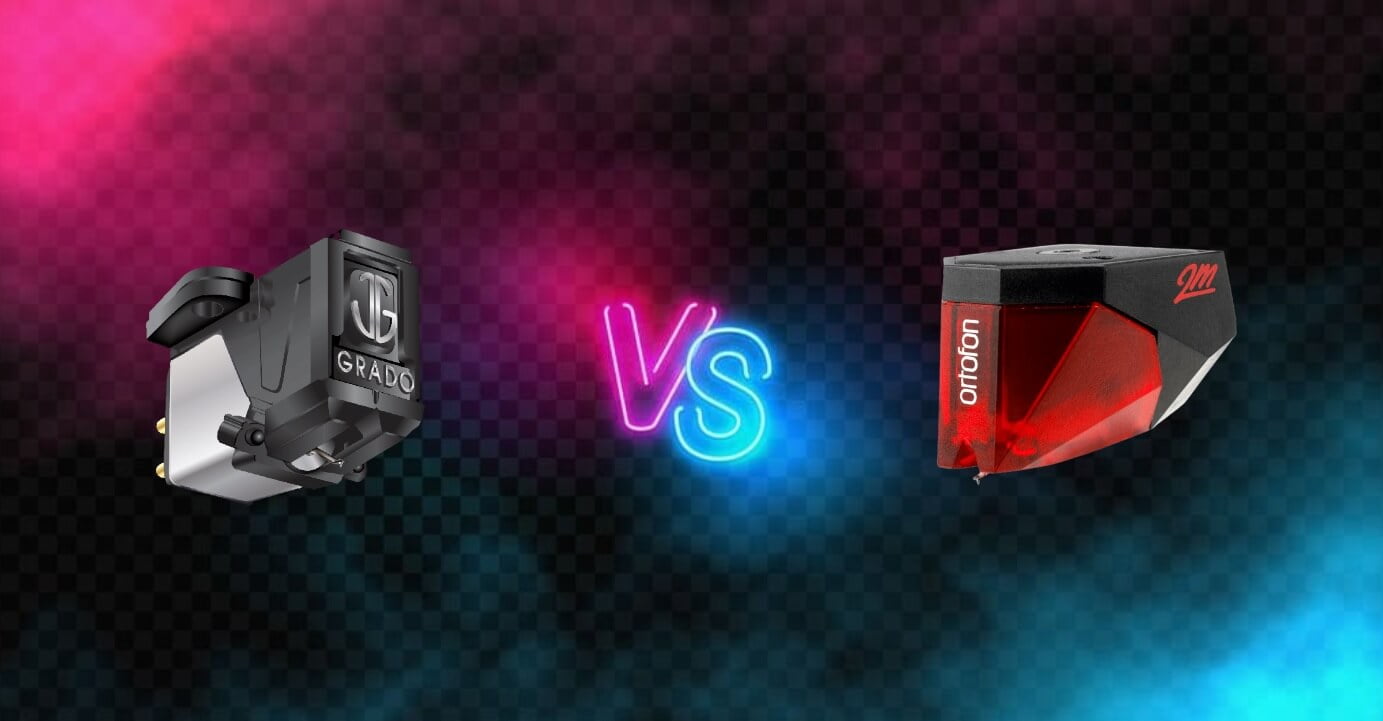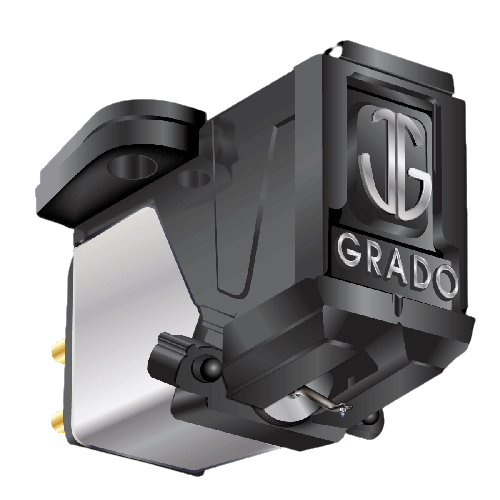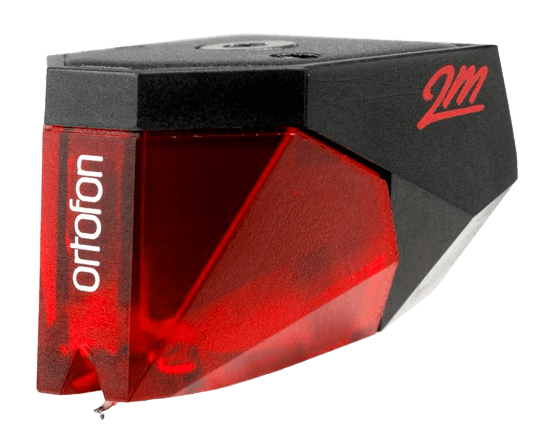If you’re new to the phono hobby, your first instinct is to look into the mid-range cartridges. That’s a good place to start as you’re still exploring before diving into the higher-end carts. This probably explains why you’re having the Grado Black 3 vs. Ortofon 2M Red dilemma.
These two are satisfactory entry-level cartridges, or carts, with emphasis on mid-range frequencies. Which one to pick depends on whether your preference leans toward the highs or the lows.
Both carts are exceptionally good picks. Choosing the right one for your record player depends on user preference when it comes to fidelity, frequency, and sound quality.
Are you interested in finding out more about each one? Keep reading.
Grado Black 3 vs. Ortofon 2M Red Overview
The Grado Black 3 sticks out as the better option because of its high-quality audio and warm mid-range sounds. It also has a formidable bass, something the Ortofon 2M Red seems to lack.
Alternatively, the Ortofon 2M Red is best known for high-quality dynamics and good audio output. The Ortofon 2M Red is also famous for providing listeners with a crisp delivery that carries nicely over all frequency ranges.
The Grado Black 3
Pros
- Provides easy stylus replacement, and a good upgrade path up to the Gold 3 stylus
- It’s a suitable replacement for practically any worn-out stylus
- Delivers higher resolution than most moving magnet (MM) cartridges
- Produces soft highs to create balance over almost all frequency ranges
Cons
- Known to be picky about the type of tonearm they’re paired with
Every turntable has a cartridge, which is the electrically-operated mechanical part of your turntable where the stylus is attached. They may seem like a minor part of your record player, but cartridges are basically responsible for translating the imprints or grooves on the vinyl into the music that we enjoy.
The Black 3, like all Grado carts, features a 3-piece cantilever and a patented Flux-Bridger generator. As a result, it helps create well-balanced frequency ranges.
The highs of the Grado Black 3 are somewhat softened, brought on by its optimized transmission line technology. This mellows out the resonance and distortion, resulting in a classical vinyl effect.
Some listeners find this pleasurable, but those who are accustomed to crisp sound output will immediately notice this. Yet, what it lacks in detail, it sure makes up with depth and warmth.
Who Should Get the Grado Black 3?
The Grado Black 3’s toned-down highs make it ideal for playing classical music. Stringed instruments in classical scores tend to come off as squeaky and high-pitched. As a result, the subtle highs of a Grado serve a satisfying balance to its sharpness.
Moreover, anyone who appreciates deep bass and heavy vocal jazz would enjoy the tonalities and pitches of Grado Black 3. It’s also a great choice if you frequently listen to pop and jazz music.
Related: Sumiko Pearl vs. Ortofon 2M Red
The Ortofon 2M Red
Pros
- Designed to fit snugly into most turntables, making it easier to align and balance
- Split pole pin design results in a precise, insightful audio resolution
- Delivers a clear and crisp output
- Produces high-quality midrange sounds
Cons
- Too much treble, so it needs a bit more bass for balance
The most common remark about the Ortofon 2M Red is the lack of bass with too much focus on the highs. It’s a common complaint when playing bright recordings since the result often comes out as unrefined. This feature of the Ortofon 2M Red has its listeners divided between the yeas and nays.
When it comes to the midrange, the sharpness adds a pleasant clarity to the vocals, something that a lot of listeners approve of.
Who Should Get the Ortofon 2M Red?
The Ortofon 2M Red is recommended for those who prefer sharpness over heavy bass. Sharpness refers to increased sound pressure, causing a high-frequency sensation.
It’s an ideal choice for those who appreciate vocal precision and enjoy the overall high-resolution sound. That said, we recommend the Ortofon 2M Red if you like listening to blues, R&B, soul, and rock.
The Grado Black 3 vs. Ortofon 2M Red Showdown
The sound quality of your record player relies greatly on your cartridge. To help you weigh the parameters, here are the points where both carts meet and where they stand apart.
How They Differ
Despite having the same hardware makeup, their outputs significantly differ. Specifically, the Ortofon 2M Red leans toward the higher frequencies, while the Grado Black 3’s bass is more defined. Most users, though, agree that the mids from both models meet at face value.
The manufacturing process and Grado’s patented technologies contribute to their notable differences. This allows for the listener to decide for themselves which one’s the better fit for their turntables and musical preferences.
Must Read: Denon DL-110 vs. DL-103
Where They Level Off
Both the Grado Black 3 and the Ortofon 2M Red operate with moving magnets (MM).
MMs are more durable than moving coil (MC) cartridges, delivering almost similar functions. In addition, MM cartridges are more versatile, having options for replacements and upgrades for their stylus. This is an advantage because replacing the stylus is less expensive than doing away with the entire cartridge.
MMs are significantly heavier because of magnets. This extra weight prevents it from detecting finer details in the groove, so it lacks precision. Still, some extra density isn’t all bad because it gives a robust sound that doesn’t need preamps.
The Grado Black 3 and the Ortofon 2M Red have elliptical-shaped diamond styli. It has two flat sides, shaped after the cutting stylus. This stylus shape allows for improved tracking, which is ideal for higher frequencies.
The stylus, sometimes referred to as the needle, is the tip of the cartridge that reads the grooves on the vinyl. The stylus shape affects how high-frequency information is read by the amount of contact against the groove walls.
Remember, though, that even with the same generator type and stylus shape, the result could still vary according to the cartridge brand and model.



